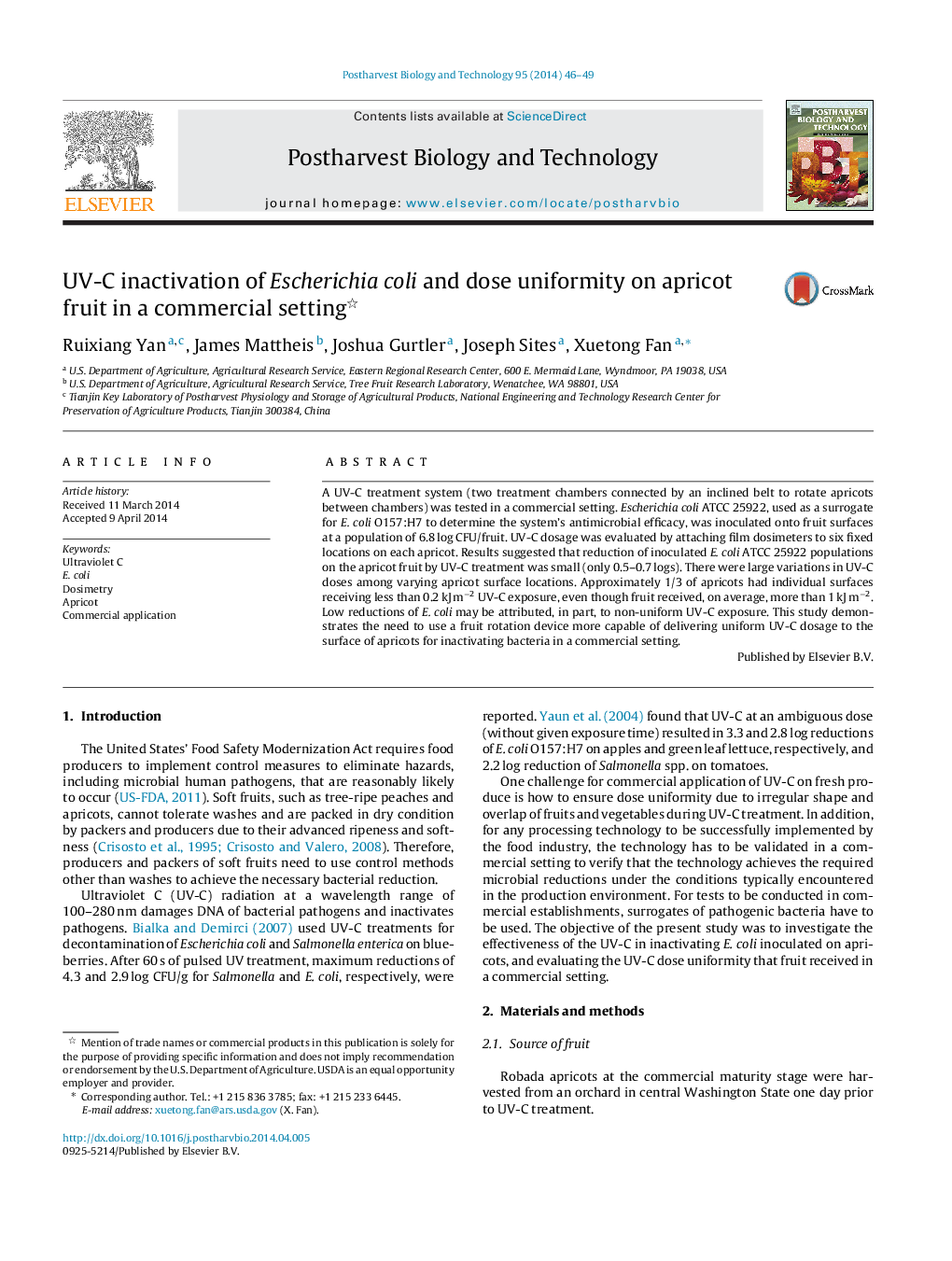| Article ID | Journal | Published Year | Pages | File Type |
|---|---|---|---|---|
| 4518173 | Postharvest Biology and Technology | 2014 | 4 Pages |
•E. coli ATCC 25922 can serve as a suitable surrogate for E. coli O157:H7.•UV-C reduces E. coli on apricots by less than 1 log CFU/g in the commercial setting.•Fruit received largely varying UV-C doses at different surface locations.•A fruit rotation device is needed for more uniform UV-C dosage to fruit.
A UV-C treatment system (two treatment chambers connected by an inclined belt to rotate apricots between chambers) was tested in a commercial setting. Escherichia coli ATCC 25922, used as a surrogate for E. coli O157:H7 to determine the system's antimicrobial efficacy, was inoculated onto fruit surfaces at a population of 6.8 log CFU/fruit. UV-C dosage was evaluated by attaching film dosimeters to six fixed locations on each apricot. Results suggested that reduction of inoculated E. coli ATCC 25922 populations on the apricot fruit by UV-C treatment was small (only 0.5–0.7 logs). There were large variations in UV-C doses among varying apricot surface locations. Approximately 1/3 of apricots had individual surfaces receiving less than 0.2 kJ m−2 UV-C exposure, even though fruit received, on average, more than 1 kJ m−2. Low reductions of E. coli may be attributed, in part, to non-uniform UV-C exposure. This study demonstrates the need to use a fruit rotation device more capable of delivering uniform UV-C dosage to the surface of apricots for inactivating bacteria in a commercial setting.
